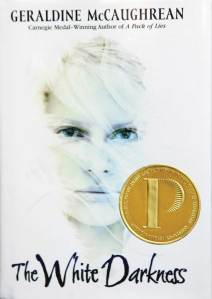V. 1 of Arisa by Natsume Andou: Manga Review
It’s been a while since I’ve discovered a new shoujo manga (that’s actually been released in America) I could not put down. In fact, there really hasn’t been one since Dengeki Daisy. But simply reading the premise of this gave me chills.
Estranged high-school twins Arisa and Tsubasa are reunited after years of secret communication through letters – and Arisa promptly attempts suicide. In an effort to figure out why, Tsubasa disguises herself as her twin and attends Arisa’s high school. The reason has to do with an online personality called “The King” and his/her relationship to Arisa’s class. But will Arisa’s secrets destroy Tsubasa’s life, too?
Plot
Analyzing and re-analyzing every personality for clues as to the King’s identity – and Arisa’s suicide attempt – makes this manga somewhat character-driven and extremely compelling. Of course, some coincidences are a little too perfectly incidental. To Ando’s great credit, not all of Arisa’s classmates fall for Tsubasa’s Clark Kent-ism of her sister. They notice the differences in their personality and express different levels of concern.
Artwork
The art is reminiscent of Yuu Watase’s and rather typically shoujou. Big eyes for crying, detailed hair and outfits. Some proportions and angles are a little awkward. Natusme Ando is, however, yet another manga artist who has mastered the creepy smile. Delicious. 😀
Ando plays with the page panelling in ways I haven’t seen before. For example: Before Arisa’s suicide attempt, several pages corner with a snippet of a folded note – part of her reason for jumping. The reader doesn’t see the full note until she has gone over. Beautiful.
Characters
Because all peripheral characters are suspects who could be the King, even those who are flat at first develop new dimensions – especially once the class’s crowd psychology hits its frequent peaks.
Tsubasa herself struggles with her identity as she constantly compares herself to her sister and redefines her relationship to her sister. Her dark side could get deeper, but she’s no Mary Sue.
The cast includes:
- Tsubasa – Too spunky/punky to get a boyfriend
- Arisa – Too beautiful and popular to be considered anything less than perfect and happy
- Takeru – An adorable “best friend” type, very committed to Tsubasa
- Mariko – Arisa’s cutesy, innocent best friend
- Midori – Arisa’s prestigious, nonchalant boyfriend
- For something cheesy – Happy Go Lucky by Steps
- For something dramatic – Much Like Falling by Flyleaf
- See Who I Am by Within Temptation
- The Leaper by Deas Vail
- All We Are by One Republic
There has to be a good song out there to express Arisa’s loving desire to figure her sister out. I’ll update when I find it. 🙂
What I learned about storytelling: Don’t underestimate double trouble. It can be hokey sometimes, sure, but there are always going to be new ways that it can actually tie into themes of identity and belonging.






Written
on May 27, 2012